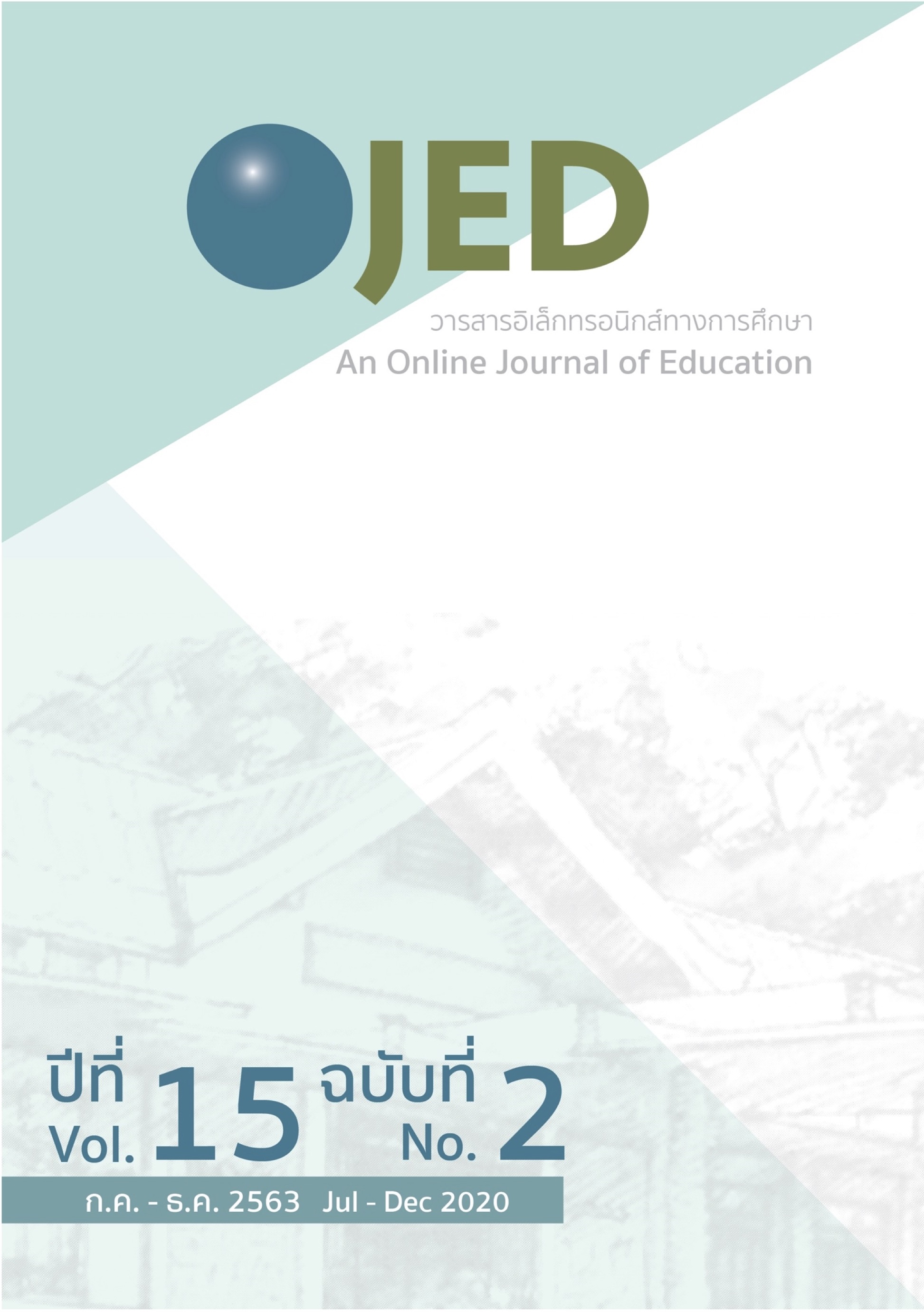Enhancing Natural Disaster Preparedness Behavior for Kindergarteners Based on an Imaginative Approach
DOI:
https://doi.org/10.14456/ojed.2020.12Keywords:
natural disaster preparedness, imaginative approach, kindergartenerAbstract
The purposes of this research were 1) to develop a program of natural disaster preparedness for kindergarteners based on an imaginative approach; and 2) to study natural disaster preparedness behavior, which consists of identification of disasters and protection from or during disasters. This research was quasi-experimental in design, making use of a One-Group Pretest-Posttest Time-Series Design. The samples were eighteen Kindergarten-2 students in the 6th Cycle of Commemoration School. The method of study consisted of 3 phases, namely, construction, field test and revision of the program. The research duration was 10 weeks. The research instrument was a test of natural disaster preparedness behavior for kindergarteners. The data was statistically analyzed by using the arithmetic mean, standard deviation, repeated measures ANOVA and t-test.
The research results were as follows: 1) After the experiment, the natural disaster preparedness behavior mean scores of the samples were higher than before the experiment at a .01 significance level. 2) After the experiment, the kindergarteners’ natural disaster preparedness behavior through participation in program had increased by 93.23 percent, which is higher than before the experiment at a .01 significance level. The program was made up of principles, objectives, features, content, implementation procedure and evaluation. Features of the program consisted of 3 content time frames for each disaster:
1) Before disaster 2) During disaster 3) After disaster. There were 4 instructional processes: 1) Making wonder 2) Developing understanding 3) Learning discussion 4) Evaluation of knowledge and understanding.
References
กรมป้องกันและบรรเทาสาธารณภัย. (2551). รายงานประจำปี 2551. (ม.ป.ท.): (ม.ป.พ.).
กรมอุตุนิยมวิทยา. (2559). รายงานเหตถุการณ์แผ่นดินไหวในประเทศไทยและประเทศใกล้เคียง. http://seismology.tmd.go.th/info/risk.pdf
เกรียงศักดิ์ ชยัมภร. (2556). ผลของการจัดประสบการณ์โดยใช้ละครสร้างสรรค์ที่มีต่อความสามารถทางคณิตศาสตร์ของเด็กอนุบาล [วิทยานิพนธ์ปริญญามหาบัณฑิต]. http://cuir.car.chula.ac.th/handle/123456789/63946
ธนัตถ์ศรณ์ รัตนมีแสงนิล. (2558). ผลของการจัดประสบการณ์โดยใช้สถานการณ์จำลองที่มีต่อความเข้าใจเรื่องความปลอดภัยในห้องเรียนของเด็กอนุบาล [วิทยานิพนธ์ปริญญามหาบัณฑิต ไม่ได้ตีพิมพ์]. จุฬาลงกรณ์มหาวิทยาลัย.
อมรวิชช์ นาครทรรพ และจุฬากรณ์ มาเสถียรวงศ์. (ม.ป.ป.). เอกสารชุดแนวคิดและแนวทางการจัดการเรียนรู้เพื่อเสริมสร้างสุขภาวะและทักษะชีวิตให้แก่เด็ก: เอกสารลำดับที่ 2 รู้รักษาตน เป็นคนปลอดภัย. http://www.ramajitti.com/info_book.php.
American Association for Health, Physical Education and Recreation. (1974).Professional preparation in safety education and school health education. A national affiliate of the national education association.
Building research institute and national graduate institute for policy study. (2007). Disaster education. (n.p.).
Collin, C., Benson, N., & Ginsburg, J. (2012). The psychology book. Dorling Kindersley.
Egan, K. (2005). An imaginative approach in teaching. Jossey-Bass.
Egan, K. & Nadaner, D. (2006). Some thoughts on"Cognitive tools. http://ierg.net/about/cog_thoughts.html
Mulleady, M. (2008). What’s the story about color in the primary grades?. In G. Judson (ed.), Teaching 360: effective learning through the imagination (pp. 31-36). Sense publishers.
New York university child study center. (2006). Caring for kids after trauma, disaster, and death: a guide for parents and professionals. https://www.preventionweb.net/files/1899_VL206101.pdf
Takaya, K. (2007). Imagination in the context of modern educational thought. In K. Egan; M. Stout; and K. Takaya (eds.), Teaching and learning outside the box (pp. 23). Teachers college press.
The Imaginative Education Research Group (IERG). (2006). What is imaginative education. http://ierg.net/about/whatis.html
Thygerson, A. L. (1977). Accidents & disasters. Prentice-Hall.
Weeks, M. (2014). Heads up psychology. Dorling Kindersley.
Downloads
Published
How to Cite
Issue
Section
License

This work is licensed under a Creative Commons Attribution-NonCommercial-NoDerivatives 4.0 International License.




